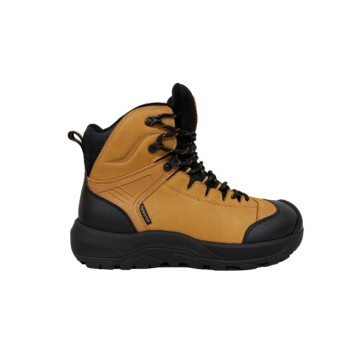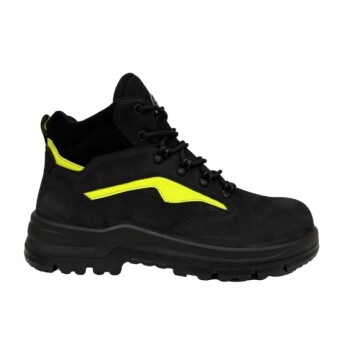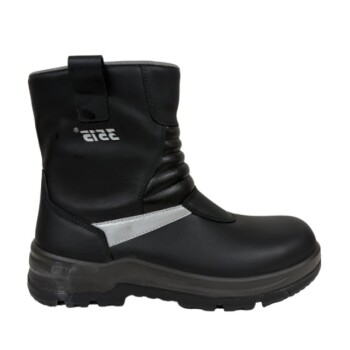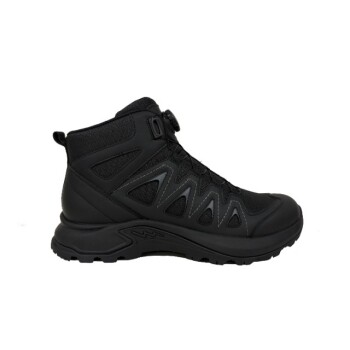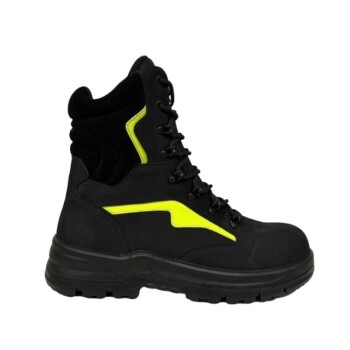At its core, the best wellington boot is a purpose-built tool that provides a completely waterproof, comfortable, and stable foundation for your feet. Key features include a durable material like natural rubber, a lining appropriate for the climate, and a sole unit designed for excellent grip and support.
Choosing the "best" wellington isn't about finding one perfect boot, but about understanding how different features serve specific needs. The ideal choice directly matches the material, lining, and sole design to your primary activity and environment.
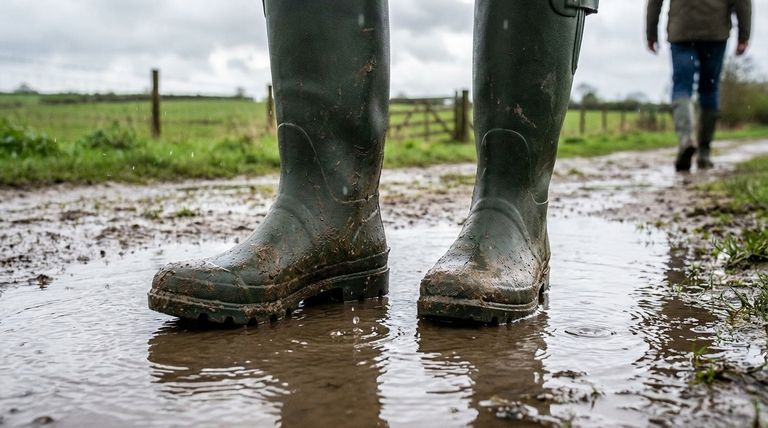
Core Components of a High-Quality Wellington Boot
To make an informed decision, you must first understand the fundamental building blocks of a wellington boot. Each component plays a critical role in the boot's overall performance, comfort, and longevity.
The Foundation: Material Matters
The material of the boot's upper determines its durability, flexibility, and weight.
The two most common materials are natural rubber and polyvinyl chloride (PVC). Natural rubber is prized for its superior flexibility and comfort, while PVC is often a lighter, more affordable, and highly durable synthetic alternative.
Weatherproofing and Insulation
While all wellingtons are waterproof by design, their ability to handle temperature varies significantly based on the lining.
A neoprene lining is the standard for cold weather, providing excellent insulation that can be effective even in sub-zero temperatures. For milder conditions, a cotton lining offers better breathability, while a simple rubber lining is easy to clean.
The Sole Unit: Your Connection to the Ground
The sole is arguably the most critical component for safety and long-term comfort.
Look for a deep, defined tread pattern that provides reliable traction and grip on slippery or muddy surfaces. A well-designed sole also absorbs shock, reducing fatigue during extended wear.
Fit and Comfort
A poor fit can negate all other positive features. The best boots offer features that allow for a more personalized fit.
This includes an adjustable buckle at the calf, which is crucial for accommodating different leg sizes and preventing the boot from slipping. Considering boot height—from full-length to ankle-style—is also key for matching the boot to its intended use.
Understanding the Trade-offs
Selecting the right wellington boot involves balancing competing features. What makes a boot perfect for one task can make it unsuitable for another.
Insulation vs. Versatility
A heavily insulated neoprene boot is essential for winter but can become uncomfortably warm and sweaty during summer months. A boot with a simple cotton or rubber lining is far more versatile for three-season use but offers no protection from the cold.
Durability vs. Flexibility
While PVC is extremely rugged and resistant to chemicals, it can feel stiff and unforgiving, especially in cold weather. Natural rubber provides a much more flexible and comfortable experience but may require more care to prevent cracking over time.
General Use vs. Specialized Work
Standard wellingtons are designed for general outdoor protection. However, boots intended for a work environment require specialized features like slip and oil resistance, enhanced toe protection, and even antistatic properties to meet safety standards.
Making the Right Choice for Your Activity
Your specific goal should dictate which features you prioritize.
- If your primary focus is casual gardening or light walking: A standard natural rubber boot with a cotton lining and a general-purpose sole offers the ideal balance of comfort and waterproof function.
- If your primary focus is winter use or cold weather conditions: Prioritize a boot with a thick neoprene lining for essential insulation and a deep-lugged sole for superior traction.
- If your primary focus is heavy-duty farm or industrial work: Look for durable PVC or reinforced rubber boots with certified safety features like slip-resistance and a protective toe cap.
Ultimately, the best wellington boot is the one that keeps you comfortable, dry, and secure, allowing you to focus entirely on the task at hand.
Summary Table:
| Feature | Why It Matters | Key Options |
|---|---|---|
| Material | Determines durability, flexibility, and weight. | Natural Rubber, PVC |
| Lining | Provides insulation and breathability for the climate. | Neoprene (cold), Cotton (mild), Rubber (easy-clean) |
| Sole | Ensures safety, grip, and long-term comfort. | Deep-lugged tread, Slip/Oil-resistant |
| Fit | Essential for comfort and preventing slippage. | Adjustable calf buckle, Appropriate height |
Ready to find the perfect wellington boot for your needs?
As a large-scale manufacturer, 3515 produces a comprehensive range of durable, comfortable, and safety-focused footwear for distributors, brand owners, and bulk clients. Whether you need insulated boots for winter, rugged work boots for industry, or versatile styles for general use, our production capabilities encompass all types of shoes and boots to meet your exact specifications.
Contact our expert team today to discuss your requirements and discover how we can provide the right footwear solution for your market.
Visual Guide

Related Products
- Safety Footwear Wholesale Manufacturer for Custom OEM/ODM Production
- Wholesale Safety Footwear Manufacturer for Bulk & Custom OEM Orders
- Premium Flame-Retardant Waterproof Safety Boots and Shoes
- Premium Insulated Safety Boots and Shoes for Wholesale & Bulk Orders
- Wholesale Premium Waterproof Nubuck Safety Shoes Boots
People Also Ask
- What do heavy duty boots do? Protect Your Feet in Demanding Work Environments
- How do safety shoes contribute to cost savings for companies? A Strategic Investment in Risk and Cost Management
- Is safety-toe as good as steel toe? Choose the Right Protection for Your Job
- What are the cultural perspectives on wearing shoes in the house? A Guide to Home Etiquette & Hygiene
- What are the differences between steel toe, composite toe, and alloy toe Wellington boots? Choose the Right Safety Toe for Your Job



